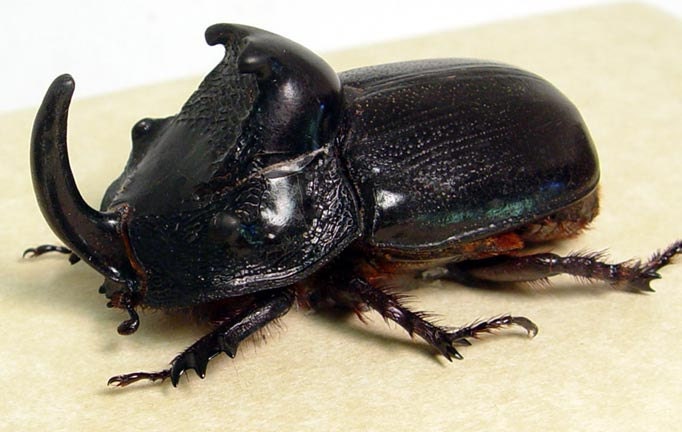An additional ecosystem for +Arnold K.'s Bug Collector class. Levels 1-3 roll 1d10. Levels 4-5 roll 1d12. Levels 6-8 roll 1d14. Higher levels, you need to make something up, I guess.
Collect the first ten and earn your Necropolis Bug Badge! +2 Save vs. Disease.
Collect all 14 for the Necropolis Master Badge! Turn Undead as a first level Cleric, advancing levels from there.
Notes
I'm playing a Bug Collector in my kid's campaign, and it's a lot of fun. The real function of this post is to spur others to develop more options for the class so that I'll have more stuff to play with.
I don't know if I have the power levels right for these, at all. Mr. K hasn't written any bugs at the 4th or 6th level yet, and he might have very different calibrations in mind.
I actually started writing these bugs in the hopes of generating 4th and 6th-level bugs for the ecosystems already presented (because my Bug Collector is getting up there), but they sorta turned into this instead.
I really like the name "Scroll Weevil," but couldn't think of a magical effect to go with it. They eat scrolls and then... ah... I got nothin'.
 |
| Ain't no sin to take off your skin and dance around in your bones. |
Collect the first ten and earn your Necropolis Bug Badge! +2 Save vs. Disease.
Collect all 14 for the Necropolis Master Badge! Turn Undead as a first level Cleric, advancing levels from there.
- Banker’s Beetle: This ravenous scarab will eat up to 1000 coins, and then kill itself pooping out a jewel of roughly equivalent value (1d6: 1. 60%; 2. 75%; 3. 80%; 4. 90%; 5. 100%; 6. 110%).
- Skull Maggot: Let this guy crawl around a recent corpse for about ten minutes and then eat it. You gain a vision of the exact circumstances of the deceased’s demise, and make the rest of the party think you are super-gross.
- Mimic Polyp: Can take on the appearance of a small valuable object for about one Turn. Useful for distracting pursuit.
- Boss Gnat: Summon a swarm of tiny insects with can be directed at a single target. They do no damage, but are very annoying (Target at -4 to hit for one round, then -3, -2, and -1 for one round each).
- Gill Bug: Wear this bug over your nose to breathe normally in noxious environments for 1d4 Turns.
- Armadiiliidae: Roll this black-skinned pill bug up and bowl it at the nearest locked door. As Knock spell.
- Ghoul Louse: Can be thrown. Causes paralysis in humanoid target for 2d4 Turns. Save vs. Paralysis.
- Umbra Moth: This fireproof moth will do its best to extinguish any lights in the vicinity.
- Manna Locust: Nutritious and delicious, one manna locust will serve as rations for three. They’re highly perishable, however, so you can’t keep your leftovers.
- Homing Drone: If you rub a substance (silver, gold, potable water, etc.) against this insect’s belly, it will detect and seek out the nearest large quantity of it. It plods along at about half normal human walking speed, keeping a very steady pace. It will not notice if you are delayed by, say, a wandering monster encounter.
- Thaumaparasitiforme: Given 1d6 Turns, this tick-like parasite will eat the enchantment or curse off one magic item.
- Clavate Morsel: Eat this bug and a pair of antennae sprout from your forehead for 1d6 Turns. You can detect secret doors, traps, and invisible, but get easily overwhelmed by the pleasure of your new senses (-2 to initiative). Eventually, the antennae dry up and fall off.
- Zombie Ant: Let this insect burrow into the brainmeat of a recently deceased creature, and it will reanimate it for 10 –(HD of dead creature) rounds. It will obey one brief command.
- Vampire Flea: When deployed, the flea will attack one creature at random (you can throw it to make it more likely it bites someone in a given vicinity) for 2d6 damage. In 1d6 rounds, it will make its way back to you, whereupon its bite will heal you up the amount of damage they it caused the target creature.
 |
| Go on. Eat it. It'll give you powers. I swear. |
Notes
I'm playing a Bug Collector in my kid's campaign, and it's a lot of fun. The real function of this post is to spur others to develop more options for the class so that I'll have more stuff to play with.
I don't know if I have the power levels right for these, at all. Mr. K hasn't written any bugs at the 4th or 6th level yet, and he might have very different calibrations in mind.
I actually started writing these bugs in the hopes of generating 4th and 6th-level bugs for the ecosystems already presented (because my Bug Collector is getting up there), but they sorta turned into this instead.
I really like the name "Scroll Weevil," but couldn't think of a magical effect to go with it. They eat scrolls and then... ah... I got nothin'.
Comments
Post a Comment